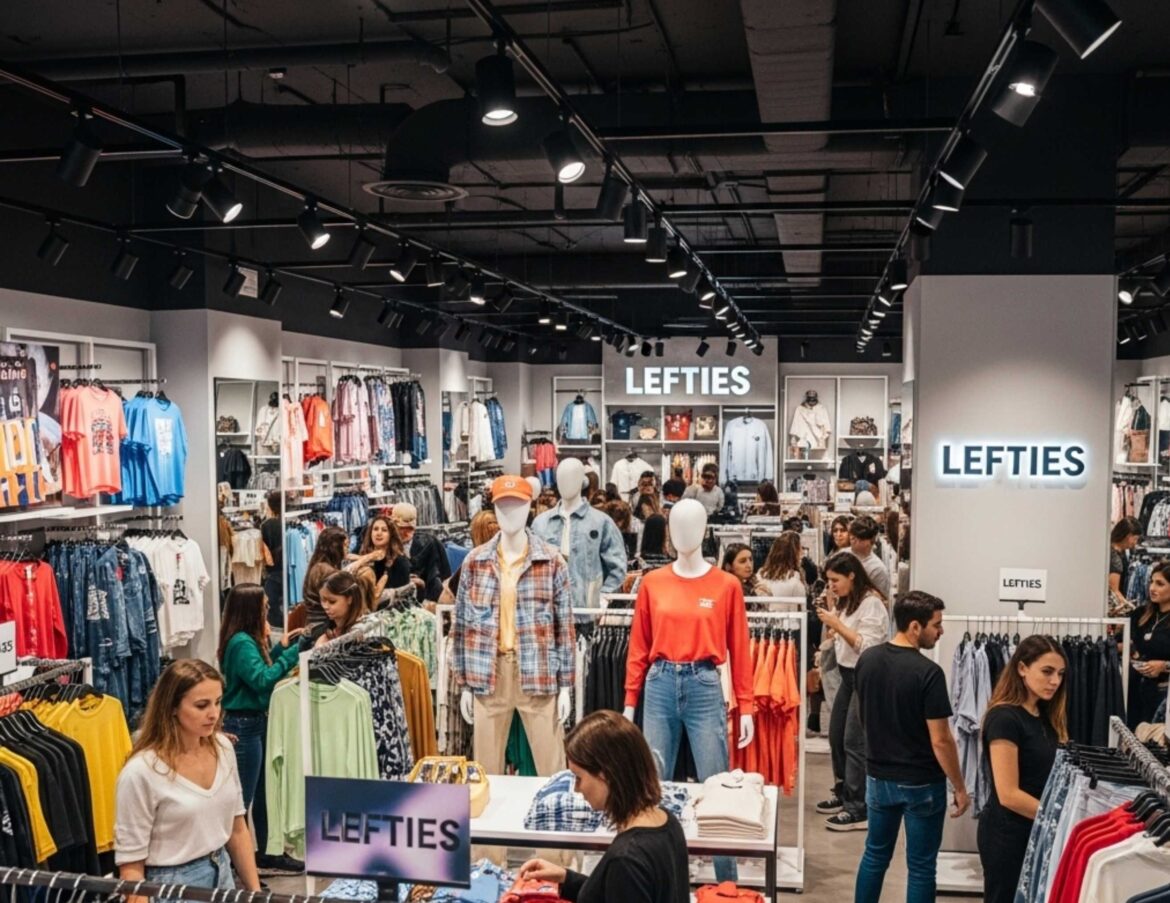Global retail giant Inditex, the parent company of brands such as Zara, Bershka, and Pull&Bear, has announced ambitious plans to expand its budget brand Lefties. The company intends to open 200 new Lefties stores across Europe by 2026, marking the largest growth surge for the chain since its inception. This strategic move reflects the growing demand for affordable fashion and Inditex’s efforts to secure a dominant position in the ultra-budget retail segment.
A New Growth Phase for Lefties
Originally launched as an outlet for past Zara collections, Lefties has evolved into a standalone brand with its own design team, technology, and target audience. Over the past two years, Inditex has heavily invested in upgrading Lefties stores, integrating digital solutions, and expanding product offerings.
Today, Lefties is a full-fledged brand featuring an online platform, a mobile app, sections for women, men, and children, as well as accessories, footwear, and home textiles. A key part of the revamped strategy is a focus on tech innovation: stores are now equipped with self-checkout stations, smart fitting rooms, and digital screens for product searches.
Expansion Strategy and Geography
The new stores will be launched primarily in Spain, France, Italy, Portugal, Poland, and Germany. These markets were selected based on consumer trend analyses and strong growth potential in the low-cost fashion segment. Central and Eastern European countries such as Romania, Hungary, and the Czech Republic are also being considered, given their consistent interest in affordable fashion and fast fashion formats.
Currently, Lefties operates in 10 countries, including Saudi Arabia, Morocco, and Mexico, but this expansion will now center around the European market.
Investments and Infrastructure
Industry experts estimate that total investments in opening 200 stores could exceed €300 million. These funds will cover rental costs, construction, marketing, and digital infrastructure. Inditex is expected to adopt a hybrid model—combining the development of new locations with the rebranding of existing stores previously used by other Inditex brands.
Sustainability and energy efficiency will also be prioritized. The new stores will follow green building standards and integrate energy-saving systems, aligning with Inditex’s publicly stated ESG goals.
Digital Integration
In addition to its physical growth, Inditex is placing a strong emphasis on digital integration. Lefties will continue to enhance its omnichannel experience by synchronizing online and offline platforms. A key focus will be expanding the mobile app, which allows users to scan QR codes, place delivery orders, and receive personalized product recommendations.
Loyalty programs and push marketing will also be expanded, targeting a younger, price-sensitive, and tech-savvy demographic.
Market Position and Competition
Lefties’ expansion comes amid rising competition in the budget fashion sector. Brands like Primark, Kiabi, and H&M remain active players across Europe, along with digital disruptors such as Shein. However, Inditex has a strong competitive advantage in its supply chain logistics, fast production cycles, and robust distribution network—allowing Lefties to rapidly respond to consumer demands.
Analysts point out that the key challenge will be maintaining a balance between low prices and quality. As consumers grow more aware of sustainability, Inditex aims to position Lefties as a brand offering trendy, affordable designs without compromising on environmental and social responsibility.
Market Reaction
The expansion announcement was well received by analysts and investors alike. Inditex shares rose on the stock exchange following the news, indicating strong confidence in the company’s business model despite volatility in the retail sector. Importantly, the growth of Lefties gives Inditex an opportunity to diversify its product range and capture new audiences, especially in regions with lower purchasing power.
Future Outlook
The opening of 200 new Lefties stores by 2026 is part of a broader growth strategy for Inditex. The brand is seen as a vital asset for strengthening the company’s position in an evolving economic landscape. Amid rising inflation and declining real wages, demand for affordable fashion continues to rise.
Inditex is also considering expanding Lefties beyond Europe after 2026, with Latin America and Asia among potential target markets. This underscores the company’s global ambitions in the budget fashion sector.
Conclusion
The expansion of the Lefties retail network is more than just a boost in sales—it reflects Inditex’s strategic adaptation to the shifting realities of global retail. With a strong emphasis on affordability, digital innovation, and sustainability, the brand is carving out a unique niche in the fast-changing world of fashion. Lefties is expected to become one of Inditex’s main growth drivers in the coming years thanks to its scalable business model and appeal to cost-conscious, trend-focused consumers.

